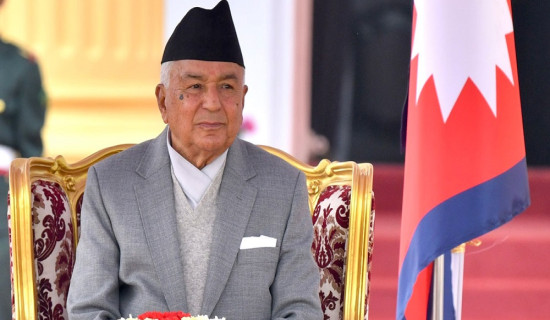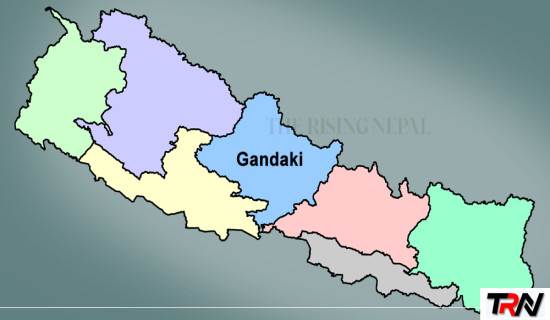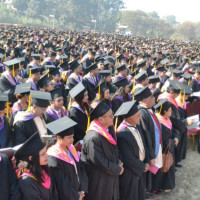- Thursday, 25 December 2025
62% households - 67% population - engaged in agriculture
By Laxman Kafle,Kathmandu, Sept. 8: The number of households engaged in agriculture, including livestock husbandry, has increased in the country over the decades.
According to the National Sample Census of Agriculture 2021/22 made public by the National Statistics Office on Thursday, about 4.13 million households are involved in agriculture at present.
The number of households engaged in agriculture was 3.71 million in 2011/12. Out of 4.13 million households, about 3.99 million households are engaged in agriculture and 132,000 households are in livestock husbandry. There are total 6.67 million households in the country.
In the year of 1961, only 1.54 million households engaged in agriculture, including the livestock sector at that time. In the agriculture census of 2021/22, the agriculture household accounts to 62 per cent of the total household of the country. It was 71 per cent in the last census 2011/12.
According to the census, the number of farmer households has increased by 168 per cent over the period of six decades.
However, the area of land held by them has increased only 32 per cent during the review period.
The census showed that around 2.21 million hectares of land is being used for agriculture at present. While the area used for agriculture was only 1.68 million hectares in 1961.
The 2021/22 census reports the total number of farm population is 19,477,955 (67 per cent). Out of this population, 9,543,825 (49.1 per cent) are male and 9,904,130 (50.9 per cent) are female.
The farm population accounts for 66.7 per cent of the total population of the country in 2021. Compared to 2011/12, the farm population has decreased by 5 per cent. The male-to-female ratio is 96:100 in 2021/22, while it was almost 100:100 in 2011/12.
The census report shows that male-headed holdings are 2,792,505 (67.7 per cent) and female-headed holdings are 1,338,284 (32.4 per cent), whereas in 2011/12, it was male 3,104,338 (81 per cent) and female 726,755 (19 per cent).
Over the past decade, the percentage of female-headed households has significantly increased. The average size of a farm household was 5.4 persons in 2011/12, which has slightly decreased to 4.7 persons in 2021/22.
According to the agricultural census, it is seen that about 2.89 farming household families have received irrigation facilities on 1.2 million hectares of land.
The area under paddy cultivation is 1.21 million hectares, the area of maize is 559,909 hectares and the area of wheat is 654,194 hectares.
Decline in number of livestock farmers
According to the Agricultural Census 2021/22, there has been a big decline in the number of farmers raising cows and bulls in the last 10 years.
Currently, 1.78 million households are rearing cows and bulls, which is 573,000 households less than the previous count. In 2011/12, around 2.281 households were rearing cows and bulls. According to new data, a family in Nepal has about 2.7 cows and bulls.
It has been seen that the number of buffaloes is about 2.9 million, the number of goats/chyangras, is about 14.02 million, the number of pigs is about 1.35 million, and the number of chickens is about 45.1 million.
Number of households seeking loan drops Although the government has provided loans at subsidized interest rates to encourage agriculture, the number of people taking agricultural loans has decreased sharply.
Since the number of agricultural loan takers is less than 50 per cent during a decade, the concession given by the government in agriculture is like water poured on sand.
According to the agricultural census 2021/22, only 12 per cent of households engaged in agriculture have taken agricultural loans.
According to the Agricultural Census 2011/12, the number of farming families taking agricultural loans was 836,000, which was 22 per cent of the total farming households at that time.
Among the agricultural loan takers, 39 per cent have taken loans from cooperatives.
















